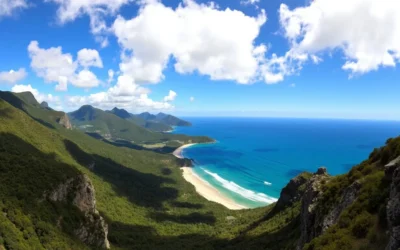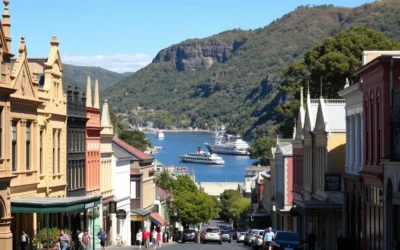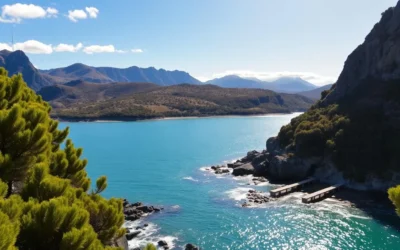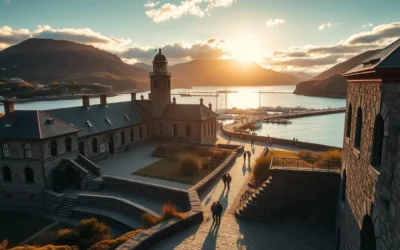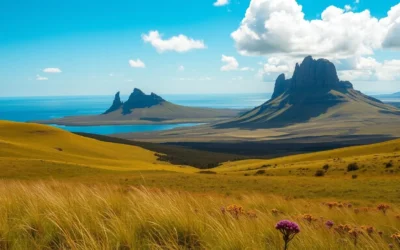✓ Accommodations ✓ Flights ✓ Rental Cars
You’ve probably seen pictures, but nothing prepares you for the eerie beauty of Queenstown, a town on Tasmania’s west coast that’s as rugged as it is alluring. Once the world’s richest mining town, Queenstown’s landscape was dramatically altered by copper mining and mass logging in the early 1900s, creating a surreal “moonscape” of bare, colored conglomerate.
As you explore this unique destination, you’ll uncover the top attractions that make Queenstown a must-visit. From historic railways to spectacular lookouts and fascinating museums, you’ll experience the perfect blend of history, nature, and adventure. Whether you’re a history buff, nature lover, or adventure seeker, Queenstown promises an unforgettable experience.
Discovering Queenstown’s Unique Landscape
Queenstown, Tasmania, is a destination like no other, with a landscape shaped by its rich mining history. As you explore this rugged region, you’ll uncover the story of how a once-thriving mining town was transformed into the dramatic landscape you see today.
The Gateway to Tasmania’s West Coast
Queenstown has long been considered the gateway to Tasmania’s West Coast, a region known for its natural beauty and rich mineral deposits. The town’s strategic location made it an ideal hub for mining activities, which began in earnest in the late 19th century. In 1881, gold was discovered in the Queen River, drawing miners to the area and marking the beginning of a new era.
| Year | Event | Impact |
|---|---|---|
| 1881 | Gold discovery | Miners flocked to Queenstown |
| 1888 | Mount Lyell Gold Mining Company founded | Industrial mining operations began |
| Early 20th century | Copper discoveries | 11 furnaces built, sulfur fumes devastated flora and fauna |
The Mining History That Shaped the Moonscape
The brutal mining practices of the past have left an indelible mark on Queenstown’s landscape. The discovery of copper in the surrounding hills led to the construction of 11 furnaces, which consumed over 2,000 tonnes of timber per week, stripping the landscape bare. Today, you can witness the slow reclamation of this mining past as vegetation gradually returns to areas once denuded by Queenstown’s mining operations.
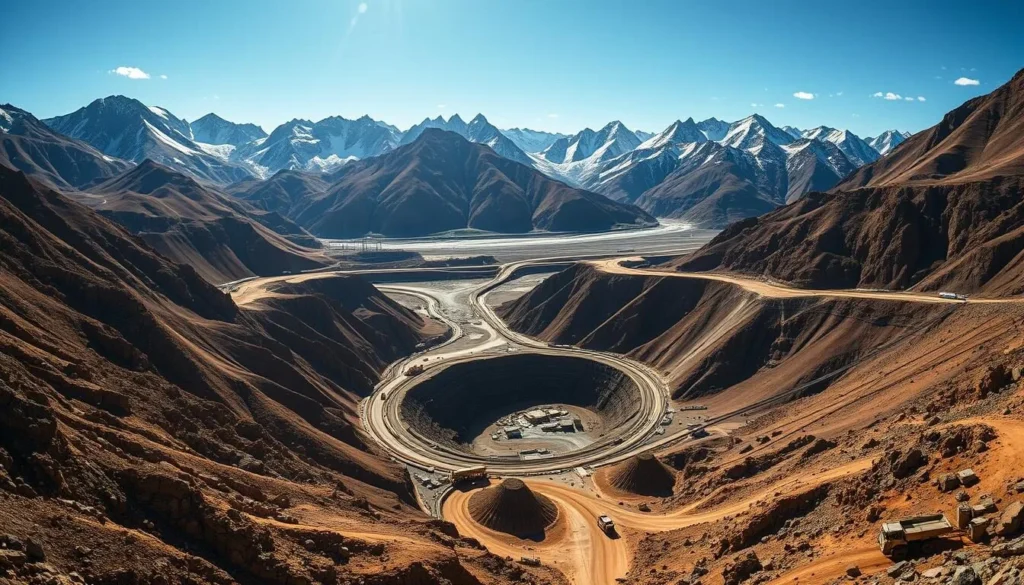
As you explore Queenstown, you’ll learn about the region’s complex history and the impact of mining on the environment. The town’s unique landscape is a testament to the power of human activity and the resilience of nature.
West Coast Wilderness Railway
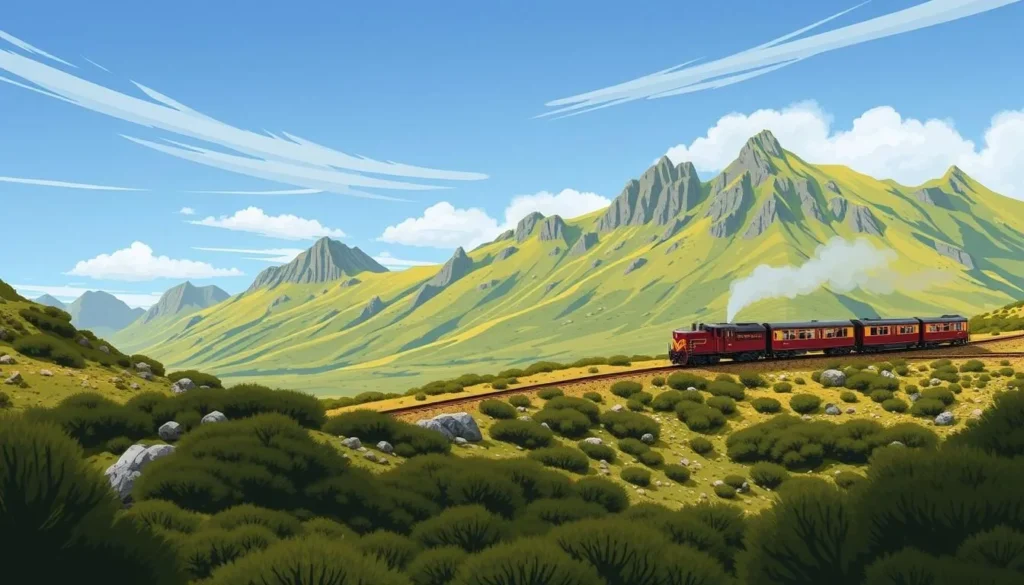
Experience the adventure of a lifetime on the West Coast Wilderness Railway, a journey that combines history, nature, and excitement. This iconic railway is a testament to the engineering feats achieved during the mining era, now offering tourists a unique way to explore Tasmania’s rugged west coast.
The Historic Railway Journey
The West Coast Wilderness Railway is more than just a mode of transportation; it’s an immersive experience into the region’s rich mining history and breathtaking landscapes. As you travel along the historic track, you’ll be treated to stunning views of the surrounding wilderness, a true marvel of Tasmania’s natural beauty.
Upgrade to the Wilderness Carriage for an enhanced experience, featuring an open-air section that offers unparalleled photo opportunities and the chance to enjoy a glass of bubbly or a chilled beer while taking in the epic views.
What to Expect on Your Railway Adventure
Your journey on the West Coast Wilderness Railway includes stops at historic stations, where you can participate in family-friendly activities such as gold panning or guided rainforest walks. These interactive elements add a fun and educational dimension to your tour, making it a perfect day-long experience that combines history, nature, and adventure.
- Consider upgrading to the Wilderness Carriage for access to an open-air section offering stunning views and photo opportunities.
- Participate in family-friendly activities like gold panning or guided rainforest walks at historic stations along the track.
- The full railway journey takes several hours, making it a perfect day tour that combines history, nature, and adventure.
- Visit the West Coast Wilderness Railway Museum at Queenstown Station, which offers free entry and displays authentic artifacts and informative exhibits about the railway’s history.
- Choose between half-day and full-day journeys, with the full experience taking you all the way to Strahan on the coast.
Before or after your train ride, be sure to check out the West Coast Wilderness Railway Museum at Queenstown Station. With its recently refurbished displays and free entry, it’s a great way to delve deeper into the history of the railway.
Spectacular Lookouts and Natural Wonders
The town of Queenstown is a gateway to some of Tasmania’s most spectacular lookouts and natural attractions. Visitors can explore a variety of landscapes, each offering unique breathtaking views of the surrounding wilderness.
Iron Blow Lookout
Iron Blow Lookout is a must-visit attraction in Queenstown, Tasmania. It offers panoramic views of the surrounding landscape, shaped by the region’s mining history. You can take in the vast expanse of the Tasmanian wilderness from this vantage point.
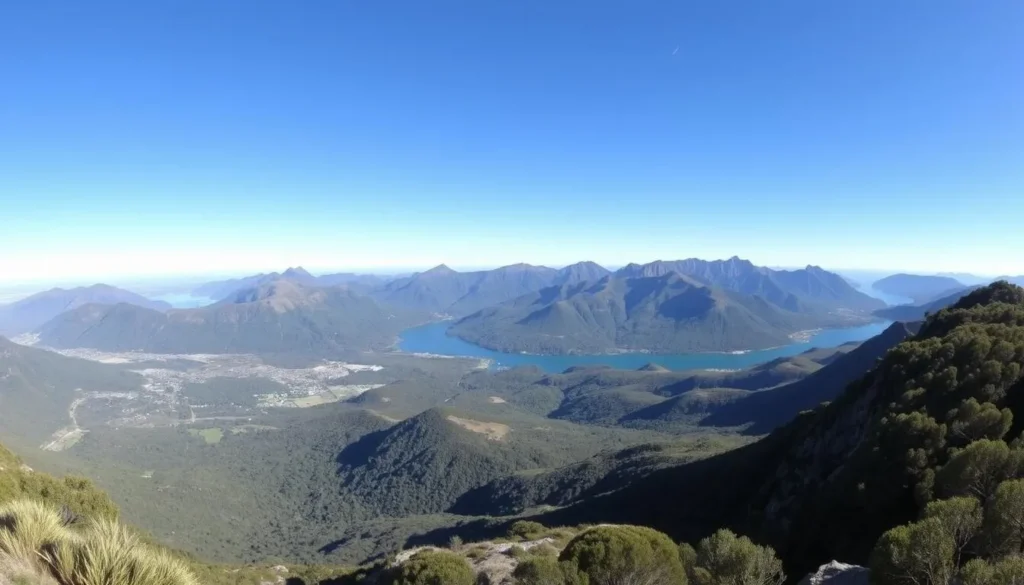
Horsetail Falls
Horsetail Falls is another natural wonder near Queenstown. This picturesque waterfall is a great spot for nature lovers and photographers. The falls are surrounded by lush vegetation, creating a serene atmosphere.
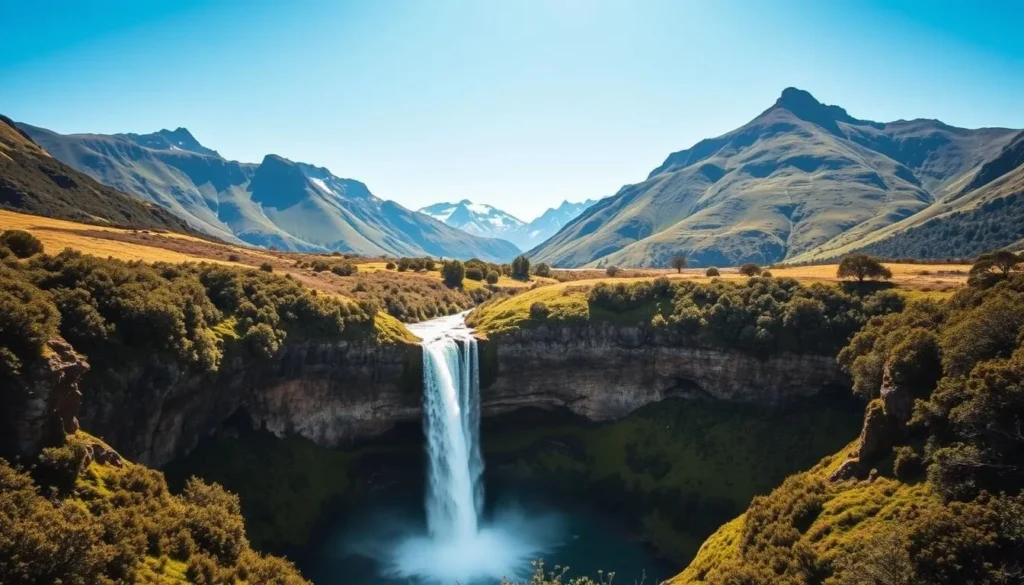
Spion Kop Lookout
Named by soldiers after a battle in the Boer War, Spion Kop Lookout offers 360-degree panoramic views of Queenstown and its moonscape. The lookout is accessible via a short but steep 5-10 minute walk from the car park on Latrobe Street. It’s advisable to time your visit for sunset to witness the barren hills transforming into a stunning display of orange and pink hues.
Key features of Spion Kop Lookout include:
- Breathtaking 360-degree panoramic views of Queenstown and its surrounding moonscape.
- A short but steep 5-10 minute walk from the car park on Latrobe Street.
- Informative signage and heritage exhibits along the path and at the summit.
- A historic viewpoint named after a battle in the Boer War.
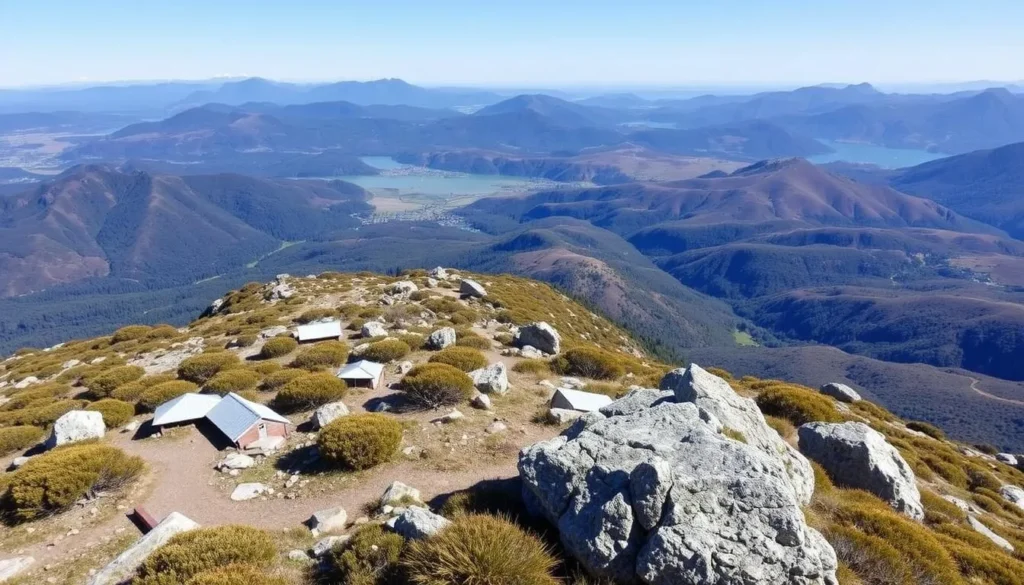
Each of these lookouts and natural wonders provides a unique perspective on Queenstown’s landscape and history. By visiting them, you can gain a deeper appreciation for the region’s natural beauty and cultural significance.
Queenstown, Tasmania: Best Things to Do for History Buffs
If you’re a history buff, Queenstown, Tasmania, has plenty to offer, from museums to historic sports grounds. The town is steeped in history, particularly related to its mining past, and there are several sites that showcase this rich heritage.
Eric Thomas Galley Museum
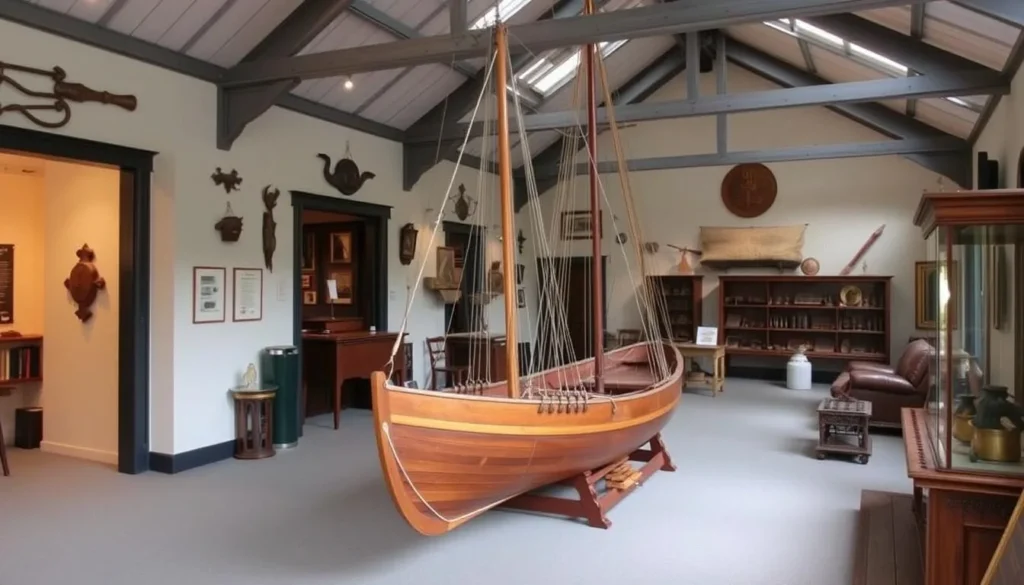
The Eric Thomas Galley Museum is a must-visit for anyone interested in the history of Queenstown. With a collection of artifacts and exhibits that tell the story of the town’s mining past, this museum provides a fascinating insight into the lives of the people who lived and worked in Queenstown during its heyday.
The museum is named after Eric Thomas Galley, a significant figure in Queenstown’s history. Visitors can explore the various exhibits, which include mining equipment, photographs, and personal stories of the people who contributed to the town’s development.
The Iconic Gravel Football Oval
Another historical attraction in Queenstown is the Gravel Football Oval, a sports ground that has been in use for over a century. This oval is famous for its gravel surface, which was created as a practical solution to the town’s high rainfall. Instead of a traditional grass oval that would turn into a mud pit, the gravel surface provided a durable alternative.
- Queenstown’s Gravel Football Oval stands as one of Australia’s most unusual and legendary sports grounds, where for over a century, tough local miners played Australian Rules Football on a surface of crushed gravel rather than grass.
- Dating back to 1895, the gravel football ground was created as a practical solution to Queenstown’s high rainfall, which would have turned a traditional grass oval into an unusable mud pit.
- You can visit this iconic sporting venue that once hosted 12 local teams and was home to the grand final of the Western Tasmania Football Association for nearly 100 years.
- The oval’s notorious reputation comes from the brutal nature of playing on gravel – players would regularly finish matches covered in cuts, grazes, and bleeding limbs, demonstrating the incredible toughness of Queenstown’s mining community.
- Today, the gravel football oval remains in use and stands as a testament to the town’s unique character and the resilience of its people, making it a must-see for sports enthusiasts and history buffs alike.
Arts and Entertainment in Queenstown
The town of Queenstown is not just about its stunning landscapes; it also boasts a vibrant arts and entertainment scene. As you explore this charming Tasmanian town, you’ll discover a variety of cultural attractions that showcase its rich history and heritage.
Q Bank Gallery
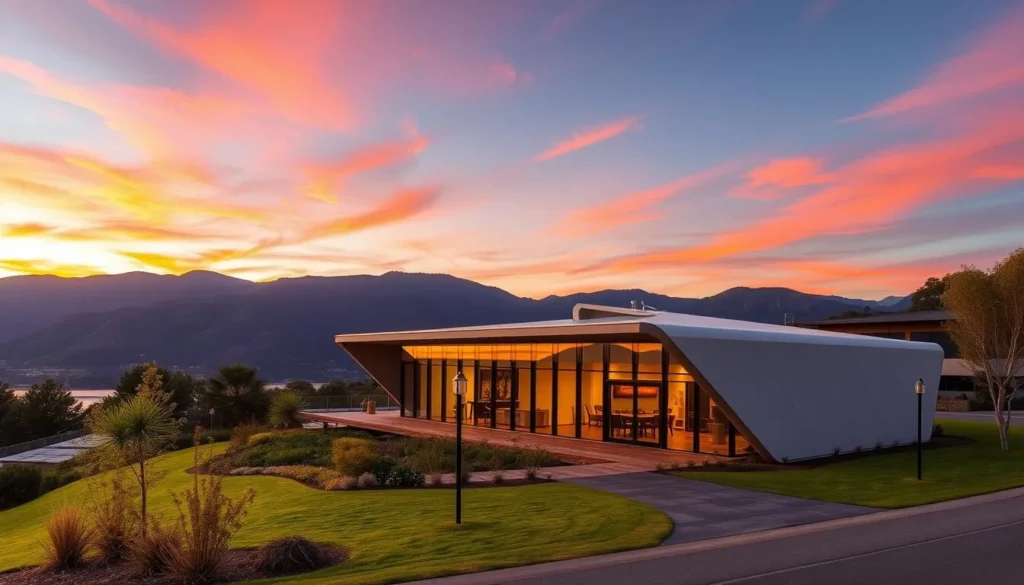
The Q Bank Gallery is a must-visit attraction in Queenstown, featuring an impressive collection of local art and artifacts. You’ll spend a good time exploring the gallery’s exhibits, which offer a glimpse into the town’s history and culture.
The Historic Paragon Theatre
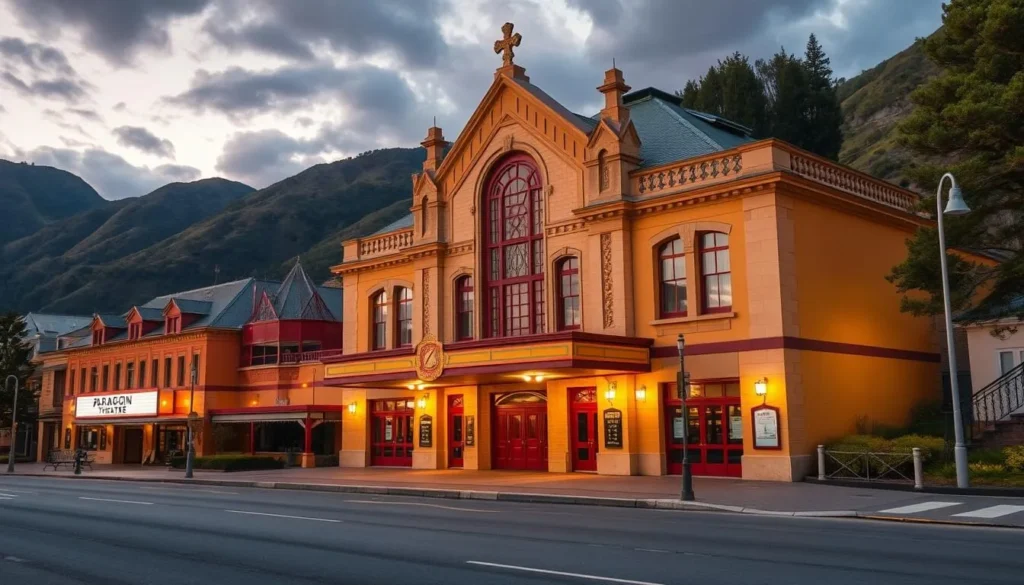
Built in 1933 in fabulous art-deco style, the Paragon Theatre is still in use today, offering a unique entertainment experience. Originally one of the first “talkie theatres” in the region, it has been lovingly restored and now operates as a 60-seat luxury cinema. You can book a movie night at the Paragon, enjoying classic films while dining on pasta, ice cream, and popcorn in an intimate setting. If you don’t have time in the evening, you can still drop by for a self-guided tour, exploring the theatre’s historic interior and watching three short video presentations about its heyday. The theatre’s revival represents Queenstown’s commitment to preserving its cultural heritage, making it a great place to visit any time of the year.
The Paragon Theatre’s history is a fascinating story that spans nearly a century. After closing in 1985 due to the rise of home video technology, it briefly served as an indoor cricket stadium before being restored in 2003. Today, it’s a beloved venue for movie nights and a testament to the town’s dedication to preserving its cultural heritage.
Day Trips from Queenstown
Queenstown is an ideal base for exploring the west coast of Tasmania, with numerous day trip options. You can easily visit nearby towns, enjoy scenic cruises, or explore the region’s rich mining history.
Gordon River Cruise
A highlight of any trip to the west coast is the Gordon River Cruise, a luxury cruise that takes you deep into the Tasmanian Wilderness World Heritage Area. You’ll enjoy a leisurely cruise along the calm waters of the Gordon River, taking in the stunning scenery and perhaps spotting local wildlife.
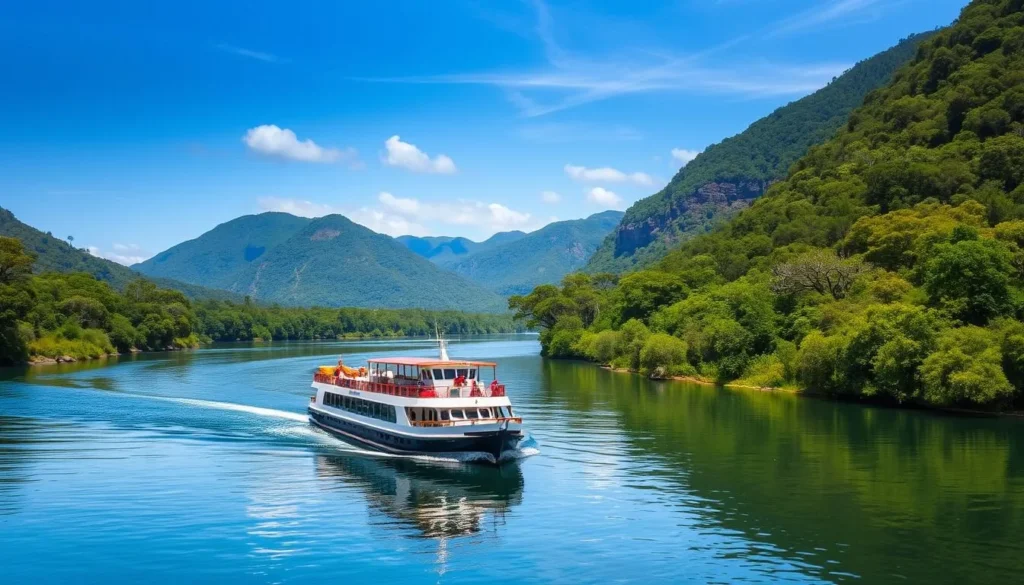
Exploring Strahan and Zeehan
Within a short drive from Queenstown, you can explore two fascinating west coast towns – Strahan and Zeehan. Strahan, less than an hour away, offers a range of attractions, including Tasmania’s longest beach, Ocean Beach, and the picturesque harbor where you can watch “The Ship That Never Was,” Australia’s longest-running theater show.
Zeehan, just 30 minutes north of Strahan, is another great mining town, deep in a valley surrounded by hills and rainforest. It’s home to the excellent West Coast Heritage Centre and Pioneers Museum, featuring one of the world’s finest mineral collections.
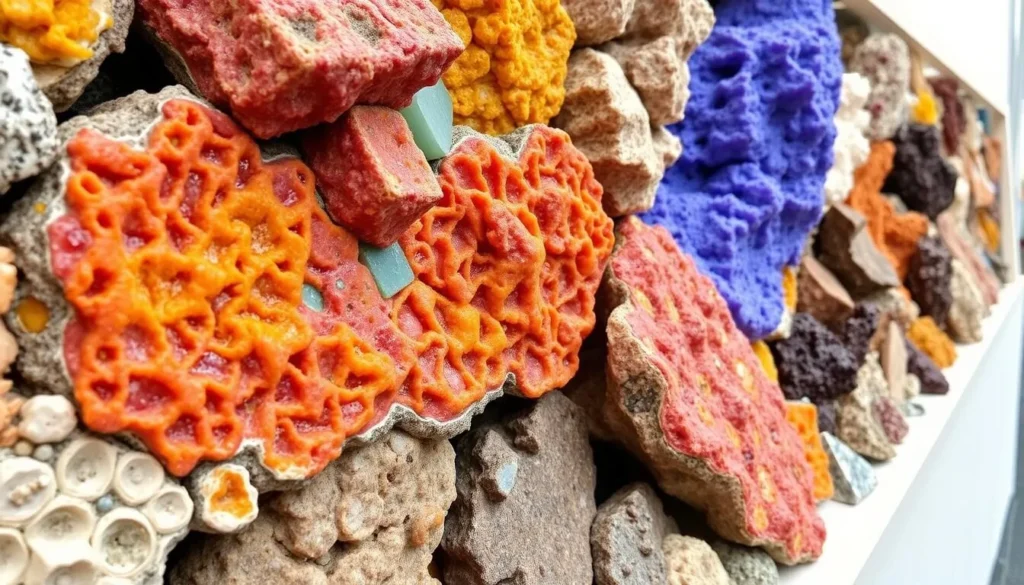
These day trips can be done in just a few hours each or combined for a full day tour of the west coast region, giving you a deeper understanding of the area’s mining heritage and natural beauty. You can also visit the nearby ghost towns of Gormanston and Linda, each with its own unique history.
Where to Stay in Queenstown
Queenstown, Tasmania, offers a range of accommodations to suit various tastes and budgets. Whether you’re looking for a luxurious retreat, a mid-range hotel, or a budget-friendly option, you’ll find something that fits your needs.
Luxury and Heritage Accommodations

For those seeking a luxurious experience, Queenstown has several high-end options. While specific luxury hotels are not detailed in the provided data, visitors can expect high-quality service and amenities. Luxury accommodations often provide a unique experience, making your stay in Queenstown memorable.
Mid-Range Hotels and Motels
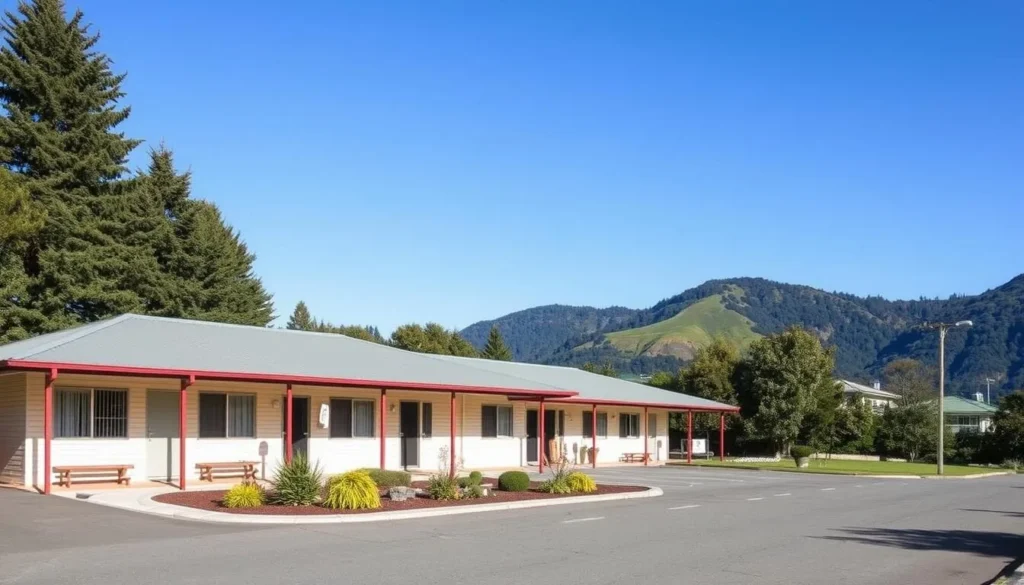
Mid-range hotels and motels in Queenstown offer comfortable stays at reasonable prices. These establishments typically provide clean, well-appointed rooms with necessary amenities. They are ideal for travelers who want a straightforward, no-frills experience without breaking the bank.
Budget-Friendly Options
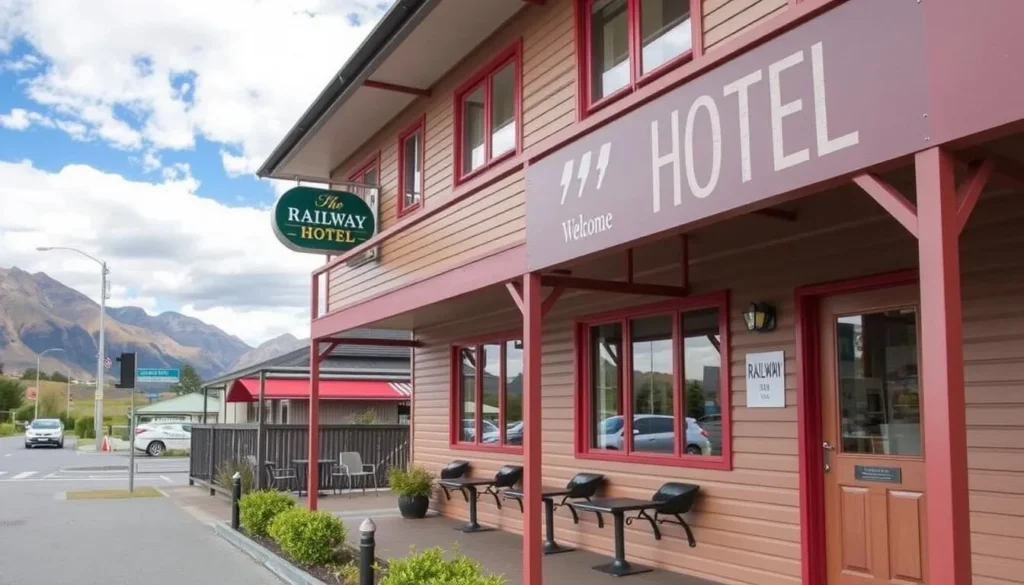
For budget-conscious travelers, the Railway Hotel is a great value. This 3-star accommodation is centrally located, offering basic guest rooms with flat-screen TVs and tea-and-coffee making facilities. You can choose between twin rooms with shared bathrooms or budget-style single and double rooms with ensuite facilities. After a day of exploring Queenstown and the Queen River valley, unwind at the hotel’s bar. Other affordable options include the Mountain View Motel Queenstown and the West Coaster Motel, both offering simple accommodations at reasonable rates. Budget accommodations in Queenstown are within walking distance of major attractions, including the historic Empire Hotel, where you can enjoy a meal without the expense of staying there.
Conclusion: Making the Most of Your Queenstown Adventure
As you plan your trip to Queenstown, Tasmania, consider the time of year to make the most of your adventure. The unique landscape around Queenstown is a perfect blend of natural beauty and industrial heritage.
You can explore the west coast wilderness, visit historic sites, and enjoy the things to do in Queenstown, including riding the West Coast Wilderness Railway and exploring the gravel football oval. Don’t miss the chance to learn about the area’s mining history and take in the breathtaking views around Queenstown.
The above is subject to change.
Check back often to TRAVEL.COM for the latest travel tips and deals.

